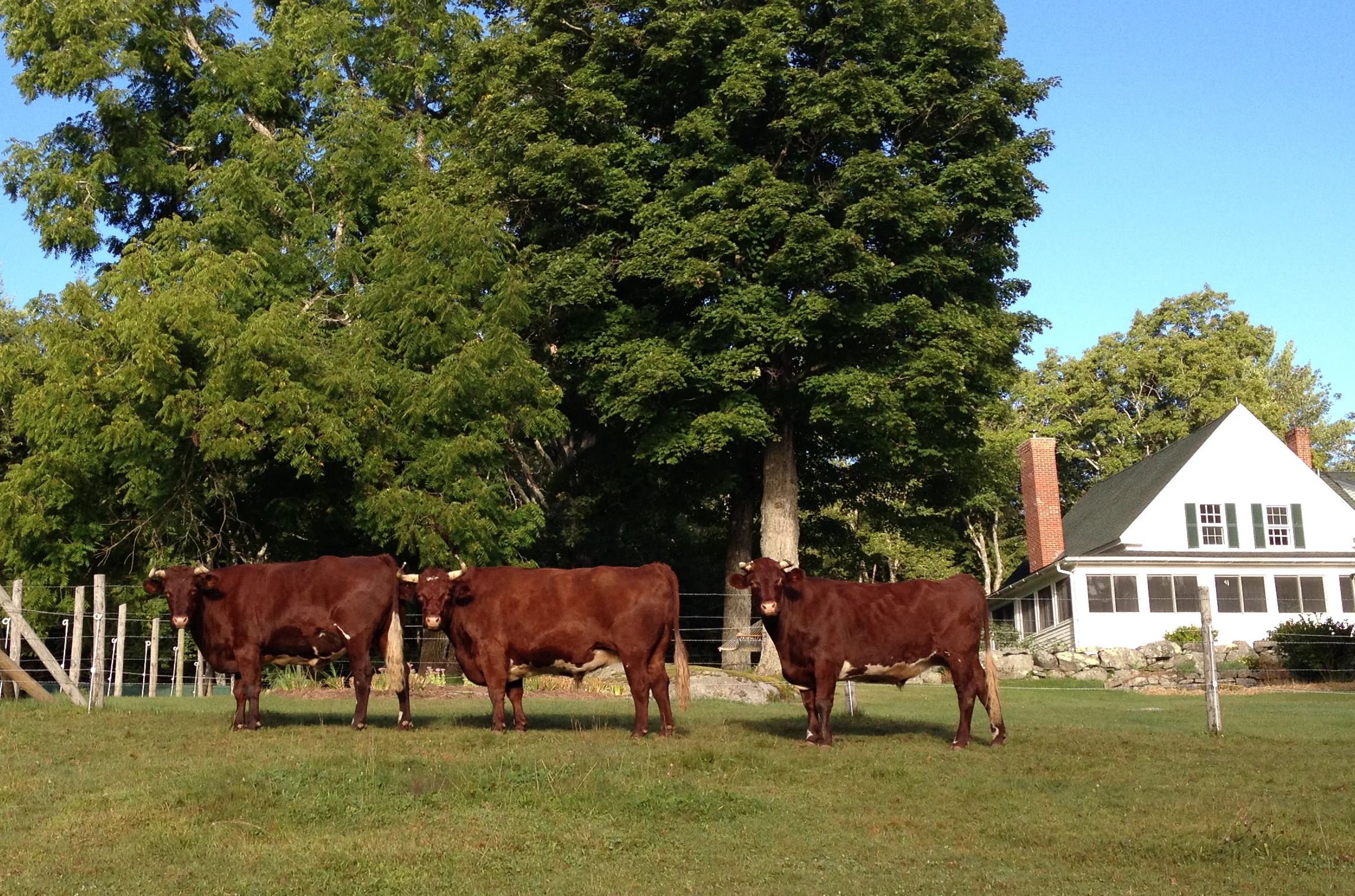The home place
Some time during the second half of the 1700s, settlers decided to make a go of it, here on Honey Hill. Perhaps all the sandy bottomland along the South Branch had already been claimed, or perhaps the higher elevation held more appeal. Whatever the case, they set to work, clearing pastures and cropland, stacking stones for walls, and siting their simple farmhouse to capture morning sunlight and the view of Mount Monadnock. Barns and outbuildings followed, along with farm roads and fencing. Evidence of the labor shows up here and there--quarried stone, half-buried horseshoes, shadows of barn foundations--and in the condition of the land. Reverted pastures and the composition of the forest sketch a story. I wish I knew more.
People speculate that Levi Blake and his bride, Polly Kelly, built the original house at Honey Hill, as well as a tannery at the bottom of the hill. We know that the Blake's daughter Elvira married Elijah Carr Belding, and that Elvira and Elijah also raised their family on Honey Hill. It is said that Honey Hill gets its name from old Honey Ballou, who lived here in the 19th century and collected honey from the wild bees. Active farming probably ceased some time in the 1940s.
A portion of an 1877 map shows the locations of W. Ballou's home (Honey Hill), Elijah Carr Belding's family farm, and our summer grass--the Belding pasture.
Lois and Griffin Stabler owned and stewarded Honey Hill for forty years. They managed the land as a woodlot and, in 1988, protected 110 acres with a conservation easement through New Hampshire's Land Conservation Investment Program. To encourage people to enjoy their forest, the Stablers established and mapped hiking trails to the summit of the Hill.
I purchased the 150-acre property from the Stablers in 1999, and have been working to improve soils and vegetation ever since.
Cattle once again live at Honey Hill
I started at the edges--pushing back the forest, opening up stone walls--and worked at developing the few existing acres of pasture. Beginning in 2008, using ox power, Rick Lewis and I began logging the most recently reverted ten acres of former pasture, extracting firewood and burning slash. By 2013 we were ready for a feller buncher and skidder to take out the huge multi-stemmed white pines, and down the road went thirty-five tractor trailer loads of wood chips, as well as truckload after truckload of tree stems. It took two more years to collect and burn all the broken limbs and slash left behind by the commercial loggers, to expose soil in preparation for seeding. This lightly forested timber pasture finally grows grass again, as well as a future supply of firewood.
It's hard to remember how dark and crowded this place once felt. Also easily forgotten: all the trees we moved.
The Belding pasture
In 2014 the farm expanded with the addition of the thirty-acre Belding pasture, located about a mile away on Route 32. The pasture had been in continuous family ownership since 1861. The sale, by Ken and Liz (Belding) Borcher, reunited the Honey Hill and Belding farming operations.
With the help of the Monadnock Conservancy, Florence Belding (Liz's mother) had conserved the pasture in 2001, at the same time deeding to local farmer Mike Johnson life tenancy for grazing his livestock. Mike uses this permission to keep friendly horses and miniature donkeys on the pasture during the summer, bringing pleasure to animal lovers who visit and share treats.
Mike cheerfully allowed his massive oxen, Buck and Ike, to serve Swanzey as ambassadors of open space protection. In gratitude for his support, in 2006 I began restoring the team's home pasture, working to eradicate acres of wild roses, goldenrod and milkweed. Now this land's official steward, I continue with a program of liming and regular mowing, and the pasture once again grows lush, thick grass.
Bright supervises some of his girls at the Belding pasture
Cattle advance to greet a visitor, while wild turkey poults work the base of the distant knoll
Late summer occupants on the Belding pasture, as seen from Route 32
Likely the topsoil was thicker, in the days of first settlement, but Honey Hill was every bit as steep and decorated with enormous glacial erratics as it is today. I'm sure that oxen powered the original clearing work at Honey Hill. I like to think that those oxen were Devons--the cattle of choice for early settlers and farmers.
Honey Hill's bony land is ideally suited to crops of perennials: grasses, along with oak, hickory, maple, pine and hemlock trees. Our American Milking Devon cattle work hard to stimulate grass growth, improve tilth, suppress stump sprouting, and fertilize the soil. We all love this place.
American Milking Devon youngsters, getting fat on a flat rock
Thriving on coarse forage, and adventure.
Soaking up spring sunshine
Regular practice of commands -- come up, whoa, gee, haw, back up -- maintains manners and respect. Here's Burley, a yearling bull.










